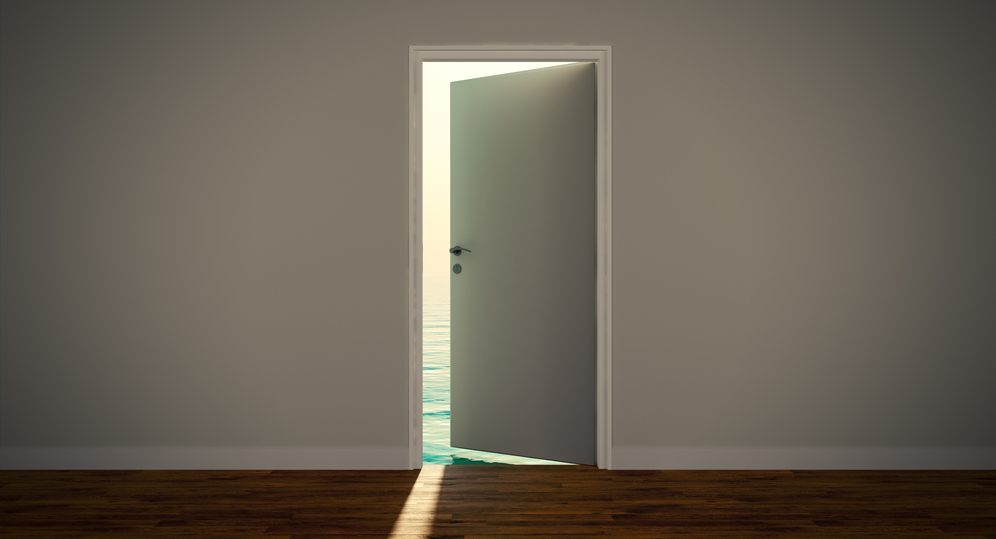
Doors fall into many categories, allowing you to choose a very specific type and aesthetic style or even an exact size, colour and material for your next project. But the most obvious door-related differences are between interior doors and exterior doors.
Exterior doors are a barrier between your home and the outside world whereas interior doors divide our homes into discernible living spaces and areas of privacy. On the surface, these contrasting qualities seem fairly obvious, but what makes an exterior door truly different from an interior door is a question that comes with a multilayered answer.
For homeowners who are getting to grips with home improvement projects, it's important to recognise, in detail, that interior and exterior doors are not just different by name, but in very many facets of their visual style and compositional construction.
So, what's the difference between an interior door and an exterior door?
In our latest blog, Door Giant will unlock all the key difference between interior and exterior doors, helping you to understand what requirements your door needs to meet before you undertake an internal or external door fitting job.
#1. Sizing & Thickness
Typically, exterior doors are larger in size than interior doors for practical entrance-exit reasons, making the moving of furniture in and out of your home easier and providing you with a sturdy, secure and weatherproof barrier to your home. Although there is no universal door size in the UK, to give you an idea, the most commonly used door height for both interior and exterior doors is 1981mm, and the standard thickness for doors is 35mm and even 40mm in some instances.
Exterior doors, available at Door Giant, usually start at around 1981mm but can go up to 2135mm in height, whereas interior doors will more often than not have a consistent height of 1981mm. Exterior doors also have a greater thickness and are denser than interior doors in terms of their core type and construction. On the other hand, interior doors don't need to have the same level of weather resistance and resilience as exterior doors, therefore greater thicknesses required for weatherproofing and durability isn't necessary.
#2. Materials
Interior doors don't need to be as robust, durable or hardwearing as exterior doors and are therefore made from either wood or fibreboard, with either a laminate or veneered real wood finish in some cases. Exterior doors can be made from composite, metal, wood or uPVC materials and are sometimes bolstered with reinforced frames to enhance strength and security.
#3. Core Differences
The core type of a door refers to the internal composition or 'fill' of your door. Usually doors are separated into solid core, semi-solid core and hollow core. Depending on the quality of interior door you opt for, you can either purchase a premium solid core interior door or a more affordable semi-solid or hollow core construction. Exterior doors need to be more stable and substantial and are therefore made with a solid core, an engineered core, or even a foam core when it comes to composite doors.
#4. Quality & Affordability
Due to the use of high quality materials needed to weatherproof your front door, exterior doors are usually more expensive than interior doors. These premium materials also contribute to factors such as insulation, energy efficiency and even security - which leads us onto the following two points...
#5. Insulation
The solid core construction of an exterior door also contributes to its insulation and energy-saving qualities. Your exterior door will bear the brunt of harsh weather conditions, extremes of temperature, draughts, storms and everything else the outdoor elements throw at your home. Solid core and foam core constructions can help to insulate your home in order to manage energy costs and prevent your home from overheating in the summer or becoming too chilly in the winter.
Conversely, interior doors won't provide the same level of insulation due to their core type but may offer some draught-proofing benefits between the various rooms of your home.
#6. Security
It's more difficult for an unwanted visitor or intruder to gain entry to your home when you have a solid core front door as opposed to a hollow or semi-solid alternative. For enhanced security, you can opt for a composite door, which delivers the highest level of protection and security thanks to their reinforced material construction, strength and high quality design.
#7. Face Decoration
In broad terms of visual style, both your exterior and interior doors will be chosen to match either the classic and traditional or modern and sleek aesthetic of your home. Whereas exterior doors will lean slightly more towards function than design, interior doors have greater style offerings available to precisely tailor your door to the type of home you live in, helping to create the perfect tone and atmosphere.
At Door Giant you can shop by style, colour and finish to find the exact door to meet your stylistic needs. Our exterior doors are organised by colour, material and type to help you achieve the best blend of form and function to meet the aesthetic and durability requirements you require.
What We Offer...
At Door Giant you can delve into an extensive range of interior doors to suit any traditional home or contemporary apartment. From pine doors to pocket door systems, coloured doors to glazed interior door options, we offer a huge range of styles, sizes and designs to suit your home design project.

Our exterior doors have been chosen to fulfil all your practical and decorative door requirements. Whether you're looking for a hardwearing front door or a specific theme or style, we offer a range of modern and traditional external doors to make the perfect first impression. Browse front doors, external sidelights, garden and outbuilding doors at Door Giant.
